- Andersons’ consultants are continuing to support their clients during the pandemic. If you require any advice, please contact your usual consultant, or the office on 01664 503200 or email [email protected].
- The House of Commons removed the amendments to the Agriculture Bill proposed in the House of Lords that would have enshrined protection of UK food standards in law. Other amendments on incorporating climate change requirements into policy and restricting the use of pesticides in certain locations were also rejected. The Bill returned to the Lords. Initially it was expected, as their amendments had been rejected once, the current version would be accepted, but this has not been the case and the Lords have put forward a (similar) amendment (16B), which seeks to ensure ‘equivalence of standards’ for imported agri-food products under any future trade deals. The Bill has returned to Parliament. In the meantime, Lizz Truss, International Trade Secretary, announced the newly formed Trade & Agricultural Commission will be put on a statutory footing, with its reports on future trade deals put before Parliament. This doesn’t exactly incorporate the Lords’ amendment(s), but the Government is probably hoping it’s enough of a concession that they stop trying to amend the Bill. But many fear this doesn’t go far enough, MPs would still not have the right to vote on such deals and intense lobbying of MPs to try and get them to support the amendment is taking place. A vote by Parliament is expected at the beginning of November.
- The Environment Bill has restarted its journey through the Parliamentary process, after being dormant since mid-March. The aim would be for the Bill to become law in the early part of 2021. There are several proposals in the legislation that will influence agriculture. One is the setting-up of the Office of Environmental Protection (OEP) which will hold the Government to account on environmental matters. It also sets out the broad principles of environmental protection such as ‘polluter pays’ and hazard versus risk-based regulatory approaches, which could have relevance in pesticides regulation and fertiliser use.
- Brexit talks are at last getting down to the real detail. Compromises are still required on the difficult topics of the Level Playing Field and Fisheries. The October European Council was widely seen as a ‘deadline’ but it will be into November now before an agreement might be reached, leaving very little time for the ratification process. With the Transition Period ending on 31st December; last minute glitches could also result in a No Deal situation on 1st January.
- Boris Johnson, has pledged that 30% of the UK’s land area will be ‘protected’ by 2030. This is part of an international ’30 by 30′ campaign. In terms of England, around 26% of its land area is currently either protected as being part of a National Park or Area of Outstanding Natural Beauty (AONB). The extra 4% equates to around 400,000 hectares. This might come from an extension of existing areas, or completely new designations.
- Provisional results from the June 2020 Survey of Agriculture and Horticulture have been released by Defra showing planted areas in the UK for main crops and estimates for crop production. Not surprisingly, the weather has had a significant affect. Wheat plantings were down by 22% and, with yields also significantly reduced, production is provisionally reduced to just over 10mt. Spring barley area was up 55% on 2019 levels. But reduced yields means, although the total barley planted area was 22% higher, total production was just 3.9% more than last year. The oat area increased by 16%, but again yields were poor, resulting in a 5.5% reduction in production compared to 2019. OSR continues to struggle with cabbage stem flea beetle; the result being a 39% year-on-year reduction in production. The wet weather and failed OSR fields resulted in an increase in the fallow and maize area by 57% and 6% respectively. The field bean and combining pea areas have also risen by 38% and 27% respectively.
- The dramatic change in crop areas (see above) means production available for marketing is equally unusual. The price of wheat has risen by over £20 pert since harvest. But barley has not followed suit, instead, a price spread over £40 has emerged. Demand for malting barley is poor due to Covid restrictions reducing the requirement for beer. Therefore, the large spring barley harvest is mainly being bought for feed. The new crop price spread is smaller but still £15 to £20 pert The OSR market is poor, the lack of OSR in the UK has very little impact on prices; the OSR market is led by the soy and palm oil markets.
- The results of the provisional June 2020 Survey show all the main categories of UK livestock have declined in number over the past year underlining the uncertainties facing the sector. The total number of cattle and calves has continued to fall and is at its lowest level since the basis of data collection changed in 2009. Both the dairy and beef breeding herds continue their historic decline. The sheep breeding flock has also recorded a year-on-year drop, with all categories showing a fall in numbers. This may be due to uncertainty ahead of Brexit. However, autumn sales of breeding sheep and store lambs have been strong, which would indicate otherwise. Total pig numbers have decreased slightly from 2019, although they are still higher than any other year since 2004. But the breeding herd has declined by a relatively large amount; on the back of good margins this is rather puzzling.
- On 30th September the first shipment for 24 years of UK beef departed for the US. Access was granted back in March for a deal worth an estimated £66m over the next five years. At £66m over five years, this would equate to a simple average of £13.2m per year. To put this into context, exports to Ireland averaged £135.6m p.a. for the years 2017-2019. However, market access to the US could provide a valuable opportunity in the long-term as, per capita, meat consumption in the US is three times the global average. There will be severe competition for any UK exports though, as other beef producing nations around the world also regard the US as a prize market.
This month’s Spotlight gives more detail on the transition to the new Environmental Land Management scheme in England. Click Here for further information.
If you would like more detail on the topics covered above, why not subscribe to Andersons’ AgriBrief Bulletin? Over the course of each month, we give a concise and unbiased commentary on the key issues affecting business performance in the UK agri-food industry, and its implications for farming and food businesses. Please click on the link below for a 90-day free trial:

















